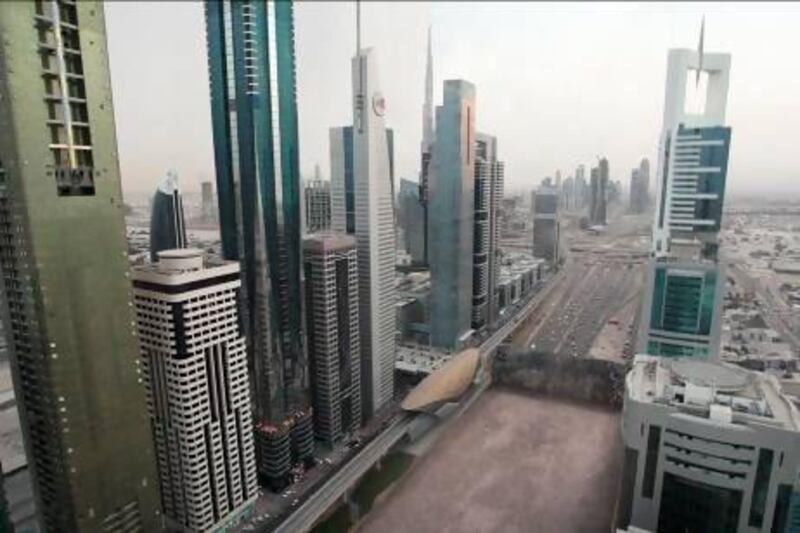DUBAI // The innermost secrets of the city’s most famous landmarks are to be laid bare in a new television series.
State-of-the-art computer-animation techniques peel away the surface layers of buildings such as the Burj Khalifa and Burj Al Arab and delve deep to reveal the technological marvels inside.
Dubai is one of six cities featured in Strip The City – the others are London, Rome, Sydney, Toronto and San Francisco. An episode is devoted to each, and the Dubai one will be screened next week.
“The fact that an episode is dedicated to Dubai shows the international fascination with this city,” said Frederic Copper-Royer, director of business development at OSN, which is broadcasting the series. The show’s makers describe Dubai as the world’s most extreme desert city, and say the episode explores “the secret technology and infrastructure that keep it running”.
Engineers and geologists explain how so many tall buildings have been built on sand and are able to withstand ferocious sandstorms.
One section, which explains how water is supplied to skyscrapers, begins with a spectacular sequence showing the Burj Khalifa’s glass cladding flying off the building to reveal the structure beneath.
The viewer learns that pumping water up a building as tall as the Burj using a single pipe going from ground level to the highest floors would be dangerous because the immense pressure required could cause the pipe to explode.
Instead there are tanks at different levels. The water is pumped in stages from tank to tank until it reaches the top, where it is stored in a reservoir before flowing down to residents through the plumbing system. More than 900,000 litres pass through the building each day.
Another section explains how the Burj Al Arab is protected from the 130 kilometre-per-hour winds that sometimes batter it.
Winds of this ferocity would be strong enough to damage the concrete core, but the hotel and its guests are kept safe by the steel frame that surrounds and supports the structure.
The series was made by a London-based independent producer, Windfall Films, and is being screened on Discovery HD.
The Dubai episode is scheduled to be screened on the Discovery HD channel at 10.55pm on Sunday and again at 1.45pm on Friday, May 24.
csimpson@thenational.ae






